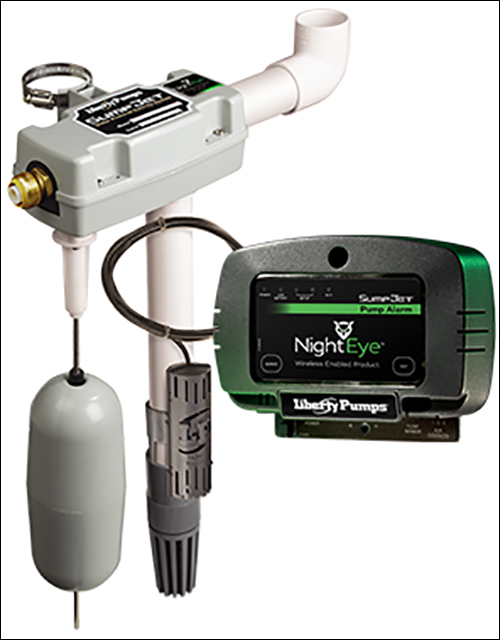Recent flooding in Louisiana serves as a reminder of how dangerous and destructive major rain events can be—even if they’re not generated by a hurricane. According to the National Flood Insurance Program (NFIP), from 2010 to 2014, the average flood claim in the United States amounted to nearly $42,000—and more than 20 percent of all NFIP claims originate in areas outside high-risk flood areas.
Liberty Pumps, a New York-based manufacturer of sump, sewage and effluent pumps, recently partnered with IoT platform provider Electric Imp to create a line of six new connected pumps designed to forewarn homeowners of a potential flood, based on an increase in the water level inside the pump reservoir. This allows them to get a jump on responding, and to hopefully mitigate potential damage from a flood event.

But Liberty Pumps also anticipates that the new product, dubbed NightEye, will generate useful insights for the company, since it has been designed to collect and upload product performance and diagnostic data that is sent to Liberty Pumps via Electric Imp’s cloud-based servers.
“With the popularity of other smart connected devices now found in home equipment,” says Randall Waldron, Liberty Pumps’ VP of sales and marketing, “homeowners have been looking for the ability to know if there is a pump problem in their home before it causes costly flood damage.”
Electric Imp and Liberty Pumps developed the NightEye pump alarm unit in one year, and it became available earlier this month.
“Liberty Pumps builds pumps for a living. They’re not IT experts,” says Oliver Hutaff, Electric Imp’s COO and CFO. “So they wanted to outsource the connectivity piece to us, but also wanted it to be a scalable platform they could grow with over time.” Plus, he notes, it was important that homeowners could easily set up and start using the application.
The NightEye unit connects to the sump pump level sensor via a cable and is plugged into a wall outlet, but also accommodates a 9-volt battery so that it will still operate if the home’s power goes out. An Electric Imp module, containing a Wi-Fi radio that transmits data to and from the Electric Imp cloud-based platform via the homeowner’s Wi-Fi network, is embedded in the unit and collects information from the level sensor.
To pair a smartphone to the pump once the NightEye unit has been connected to the level sensor and powered up, the homeowner downloads the NightEye app to a smartphone (the app is available for iOS and Android operating systems). Macadamian, an Ottawa-based software and design firm, developed the mobile application for Liberty Pumps.
To connect a smartphone to the installed NightEye unit, the homeowner opens the app and creates an account using an email address. Electric Imp receives this data and sends a confirmation email to the homeowner, containing a four-digit PIN. The homeowner keys this number into the app for authentication purposes, then selects her wireless network and keys in her network password.
To collect this password, paired with the account login, Electric Imp uses a patented approach called BlinkUp, which is based on the use of light pulses. The app shows a countdown timer and asks the homeowner to hold her phone’s screen up to the LED screen on the NightEye unit within three seconds, and to keep it there for 10 seconds. During that time, the app uses rapidly flashing light pulses to transmit the login and password to an optical sensor embedded in the NightEye unit and linked to the Electric Imp module.
Once the system is set up, the homeowner receives an alert on her phone, routed through Electric Imp’s servers and delivered through a push notification, whenever the water level sensor is triggered. The NightEye unit also generates an audible alarm when this occurs.
In addition, the NightEye unit uploads usage data, such as the number of times the pump turns on and off. This information is then routed through Electric Imp to Liberty Pumps, and could give the manufacturer new insights into how its pumps operate over time. The data could also be used for diagnostic purposes and, in some cases, as a way for Liberty Pumps to address performance problems remotely. “Depending on the asset,” Hutaff says, “if it is something that can be fixed with software, they do an over-the air fix [using the Electric Imp interface to the pump].”
Waldron says he is hopeful that NightEye will provide Liberty Pumps with a level of visibility into its product lifecycles that it could not otherwise access. “We are hoping to better understand the true use cases that our products experience,” he states. “We have long-held beliefs, but we are excited to see what the data will tell us about the real world.”

